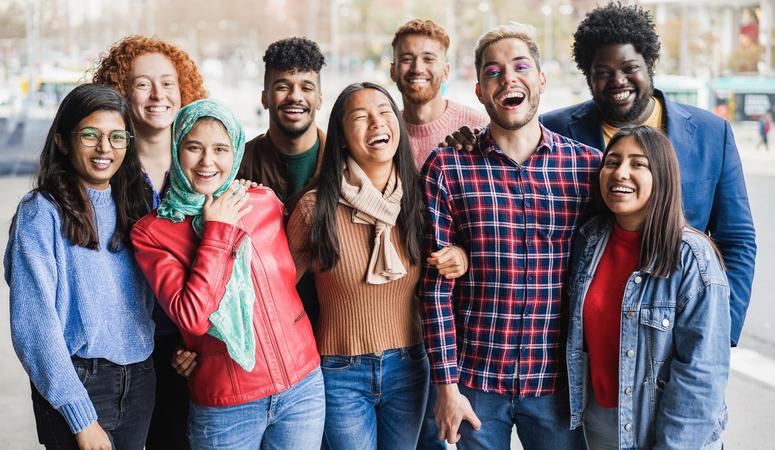
It’s time to change the narrative on affirmative action
Public institutions are doing the heavy lifting of levelling the playing field, writes Jonathan Koppell, so let’s amplify access-oriented institutions as instruments of social mobility and equity

You may also like
Popular resources
The wide range of reactions to June’s US Supreme Court rulings on affirmative action in college admissions should surprise no one. In a deeply divided America, the decision hinged on race, history and equity – matters that are among the most polarising. And yet, for all the heated disagreement, fundamental questions about the relationship between higher education and opportunity have received scant attention from all parties.
The two institutions whose admissions practices were at the heart of the case – Harvard and UNC Chapel Hill – are among the relatively small set of universities that reject far more applicants than they accept, taking only 4 per cent and 19 per cent of applicants respectively. Most people don’t stand a chance.
- How can universities reduce stress for students during the application process
- Webinar: are university admissions a flawed process?
- Improving admissions: how to evaluate the whole student
Yet we’re fixated on them, thanks to the prevailing narrative that scarcity equals value. That is, the more selective an institution is, the better it must be. So these institutions – by virtue of rejecting a high proportion of applicants – must offer the best educational opportunities. And therefore, if you are from a marginalised community and want a shot at a successful life filled with success, prosperity and satisfaction, you have to get a seat at one of these selective tables.
We need to question this narrative. The truth is that many excellent public institutions do not measure success by the number of students they turn away, and instead focus on delivering a quality education for students of all backgrounds. When you consider that more than two thirds of Black and Latino students attend public institutions (while only 21 per cent of Harvard’s student body identifies as Black or Latino), it is obvious that these schools are the ones doing the heavy lifting to level the playing field in America.
This is not to downplay the significance of affirmative action at highly selective institutions; it’s a fact that opportunities available to people vary based on their situation, and that is heavily influenced by the history of racism, discrimination and unequal access to opportunity in this country. Recent research demonstrates that wealth, legacy status and private education all provide huge contemporary admissions advantages derived from historic inequity. Affirmative action is an important tool to balance the scales, and, critically, to bring greater diversity to highly selective colleges, thus improving the learning environment for everyone.
So let’s have that important conversation about how to equitably allocate those scarce spots, but also discuss how wealth, alumni connections, athletic ability and geography play a role too.
But here’s the thing. No matter how we divvy up those precious few “golden tickets”, we’re not going to meaningfully advance as a country unless we focus on creating more top-notch opportunities for more people to succeed outside selective schools. And that’s what many excellent public institutions are trying so hard to do even as investment in them has dwindled.
As leaders in higher education, government and business, our shared goal should be opening more doors of opportunity for everyone. Here are three key elements of a strategy to amplify access-oriented institutions as instruments of social mobility and equity.
1. Make college accessible for the largest number of students possible
Montclair State University is built on an ethos of inclusion and does not consider an applicant’s race or ethnicity in making admissions or financial aid decisions. We are a minority-majority institution, a Hispanic-serving institution, 41 per cent of last year’s incoming class were first-generation college students and 48 per cent of our undergraduates received Pell grants. This year, we’re expecting our largest incoming class ever.
Our accessibility does not counteract our impressive results: Montclair ranks seventh in the nation in graduation rate performance and 21st in top performers on social mobility.
According to Pew Research Center, most schools in our country admit most of the people who apply. Many are like us, steadfast in their belief that accessibility and excellence must go hand in hand.
2. Create environments where students can thrive
Diverse student bodies are critical to delivering a future talent pool of diverse leadership. Even the Supreme Court’s majority opinion exempted the nation’s military academies from the ban on preferences because it was acknowledged that the armed forces had an interest in building a diverse officer corps.
But it’s on us to maintain a commitment to inclusivity throughout their entire experience, not just during admissions, so that all students feel a sense of ownership and a desire to stay and complete their degrees.
Last year, recognising how isolated some students felt in a post-pandemic world, we launched the Office of Student Belonging at Montclair. The office offers a wide variety of services to promote connection, especially for first-year, transfer, international, first-generation and military-affiliated students. One action we took was to stream our commencement ceremonies in Spanish for the first time. Nearly 4,000 people tuned in, and feedback from families was that they felt seen and included. We are now offering orientation sessions in Spanish so family members can understand what their students will be doing at Montclair and how to navigate the institution.
We continue this focus beyond entry. That means making study abroad available in a format and cost that are manageable. It means identifying paid internships or research experiences that work for students who cannot forgo income. Bottom line: it means ensuring that every student is in a position to reach their full potential.
3. Stop favouring graduates of ‘elite’ institutions
None of this will level the playing field if we don’t wash away the prevailing attitudes among those making hiring decisions, graduate-school admissions decisions and other evaluations of college graduates that attendance at an elite institution is a perfect proxy for excellence. If everyone in a hiring position focused on individual attributes, abilities and achievements, it would have an enormous impact on the significance of selective school admissions.
But right now, who are we kidding? Whatever people say about the varied criteria used to choose students or employees, the world acts as if the graduates from these institutions are simply “the best”. The same research referenced earlier found that “attending an Ivy-Plus college instead of a flagship public college triples students’ chances of obtaining jobs at prestigious firms”.
Alter the clumsy syllogism such that comparable graduates have equal opportunities to get started on a pathway to success and now you’re really changing the game.
Changing these perceptions won’t happen overnight. But my hope is that the conversation that took place this summer pivots our focus from analysing the distribution of an intentionally scarce number of “golden tickets” to attend highly exclusive schools, and we move towards recognising, celebrating and investing in the many, many incredible institutions that are striving to increase the supply of tickets to success.
Jonathan Koppell is the president of Montclair State University, New Jersey.
If you would like advice and insight from academics and university staff delivered direct to your inbox each week, sign up for the Campus newsletter.



Comments (0)
or in order to add a comment